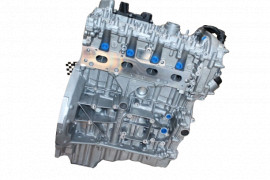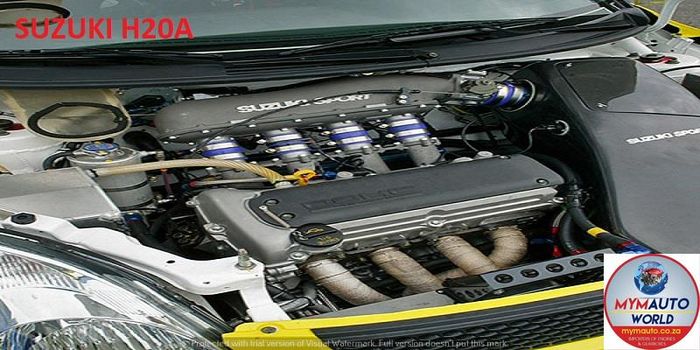Discovering the Most Recent Technical Technologies in Import Engines and Just How They Boost Driving Experience
In the world of automobile engineering, the landscape of import engines is undergoing a profound transformation driven by sophisticated technical advancements. From the development of turbocharged engines to the integration of hybrid modern technology, the most recent improvements are transforming the driving experience in ways formerly unthinkable. As import producers push the borders of performance and efficiency via improved gas shot systems and sophisticated engine administration options, the question emerges: Exactly how do these innovations genuinely impact the way we connect with our automobiles when traveling?

Development of Turbocharged Engines
In the automotive market, the evolution of turbocharged engines has significantly changed the landscape of performance and performance. Turbocharging, when primarily seen in high-performance cars, has now end up being a mainstream modern technology adopted by a large range of cars, from portable hatchbacks to luxury sedans. The essential concept behind a turbocharged engine is simple yet efficient - by compeling more air into the burning chamber, it permits even more fuel to be burned, leading to raised power output.
One of the crucial benefits of turbocharged engines is their ability to deliver more power from smaller, a lot more fuel-efficient engines. This scaling down fad has caused a decrease in exhausts without compromising performance, making turbocharging an appealing choice for car manufacturers making every effort to fulfill rigorous ecological regulations. Turbocharged engines provide improved torque at lower RPMs, offering motorists with a much more receptive and vibrant driving experience.
As technology remains to breakthrough, we can anticipate more technologies in turbocharging, bring about also higher levels of efficiency and performance in the vehicle market.
Developments in Fuel Shot Solutions
With the constant progression of auto innovation, considerable advancements have actually been made in fuel injection systems. Modern gas injection systems have actually progressed to provide fuel a lot more effectively and precisely right into the engine cylinders, boosting general engine performance and gas efficiency. Among the essential innovations in gas injection systems is the change from standard port fuel shot (PFI) to more sophisticated direct gas injection (DFI) innovation. DFI systems inject fuel straight into the burning chamber at high pressures, causing much better gas atomization and combustion, causing enhanced power outcome and reduced discharges.
Additionally, the assimilation of digital control units (ECUs) and sensors in fuel shot systems has actually enabled real-time changes to sustain shipment based upon numerous factors such as engine load, temperature, and driving conditions. This degree of accuracy ensures ideal fuel-air blend ratios, making best use of engine efficiency while lessening gas intake and emissions. Additionally, advancements in fuel injector design, materials, and spray patterns have contributed to cleaner combustion and smoother engine operation. To conclude, the constant advancements in fuel injection systems play a vital duty in boosting driving experience by providing better efficiency, gas economic situation, and ecological kindness.
Assimilation of Hybrid Technology
The evolution of gas injection systems in the direction of higher efficiency and efficiency has established the stage for the smooth integration of crossbreed innovation right into contemporary engines. Crossbreed innovation combines the usage of conventional inner combustion engines with electrical propulsion systems, providing boosted fuel performance and decreased exhausts. By integrating electric motors and batteries right into the powertrain, hybrid engines can supplement the inner combustion engine during velocity or low-speed driving, thereby boosting overall efficiency.

Enhanced Engine Administration Equipment
What are the crucial advancements in engine administration systems that are boosting the efficiency and efficiency of contemporary engines? Engine monitoring systems have actually gone through considerable innovations to optimize engine performance and effectiveness. One crucial technology is the assimilation of advanced sensors that continually check various parameters such as engine temperature, air-fuel ratio, and exhaust emissions. These sensing units supply real-time information to the engine control system (ECU), permitting for accurate modifications to be made to enhance burning processes and gas effectiveness.
Moreover, contemporary engine management systems use sophisticated formulas and man-made intelligence to assess the data collected by sensors and make dynamic changes to aspects such as ignition timing, fuel shot, and turbocharger boost pressure. This degree of precision and flexibility lead to boosted engine responsiveness, enhanced power result, and decreased gas consumption.
In addition, engine management systems currently feature sophisticated analysis capabilities that can identify and deal with concerns such as misfires, sensor malfunctions, and gas system irregularities in real-time, thus boosting overall engine dependability and long life. These developments in engine administration systems play an important view publisher site duty in enhancing the driving experience by providing ideal efficiency, fuel efficiency, and dependability.
Influence of Lightweight Products
Incorporating lightweight materials in engine production has actually changed the automotive market's technique to boosting gas efficiency and performance. Using materials such as carbon aluminum, fiber, and titanium has actually significantly reduced the overall weight of engines, resulting in enhanced power-to-weight ratios and boosted fuel economic situation. These light-weight products use recommended you read a greater strength-to-weight proportion compared to standard products like steel, enabling higher longevity without endangering efficiency.
Among the crucial benefits of using lightweight products in engine construction is the decrease of inertia, causing quicker engine action times and improved general car agility. In addition, the lighter weight adds to reduce energy consumption, making lorries a lot more ecologically friendly by reducing emissions.
In addition, the execution of light-weight materials in engine parts such as pistons, linking rods, and crankshafts has actually made it possible for designers to push the boundaries of efficiency without compromising reliability (import engines). This technology has paved the means for much more powerful and reliable engines that deliver a remarkable driving experience while satisfying stringent exhausts requirements
Conclusion
Finally, the most up to date technological innovations in import engines have actually substantially enhanced the driving experience. From the development of turbocharged engines to advancements in fuel shot systems, integration of crossbreed modern technology, improved engine monitoring systems, and making use of light-weight products, these developments have actually jointly enhanced efficiency, fuel performance, and overall driving characteristics. As innovation remains to advance, we can anticipate much more amazing advancements in the future of import engines.
Modern fuel shot systems have developed to deliver gas more effectively look here and specifically into the engine cyndrical tubes, boosting overall engine performance and fuel effectiveness - import engines. By incorporating electrical motors and batteries right into the powertrain, crossbreed engines can supplement the inner burning engine throughout velocity or low-speed driving, thereby enhancing overall performance
What are the crucial innovations in engine monitoring systems that are boosting the efficiency and performance of modern-day engines? Engine monitoring systems have actually gone through significant developments to enhance engine performance and efficiency. From the evolution of turbocharged engines to advancements in gas injection systems, assimilation of crossbreed modern technology, boosted engine monitoring systems, and the usage of lightweight materials, these innovations have actually jointly enhanced performance, gas performance, and general driving dynamics.